International scientific consortium, the SpatioTemporal Omics Consortium (STOC), produces the first spatiotemporal maps of cellular dynamics in mice, Drosophila, zebrafish, and Arabidopsis, using BGI-Research’s world-leading Stereo-seq technology.
Shenzhen, May 4 – International scientists led by China’s BGI-Research today published state-of-the-art panoramic spatial atlases of life, examining the cellular dynamics of organisms at different developmental stages and providing potentially significant new information for disease treatment, development and aging, and an improved understanding of biological evolution.
In a series of studies published in Cell Press journals, STOC members used the spatially resolved transcriptomics technology Stereo-seq, developed by BGI-Research, to produce spatiotemporal cellular maps of mice, small fruit flies (Drosophila), zebrafish and the Arabidopsis plant. The papers demonstrate how Stereo-seq has achieved a major breakthrough in spatial resolution and panoramic field of view, enabling analysis of the distribution and placement of molecules and cells in situ, and over time. 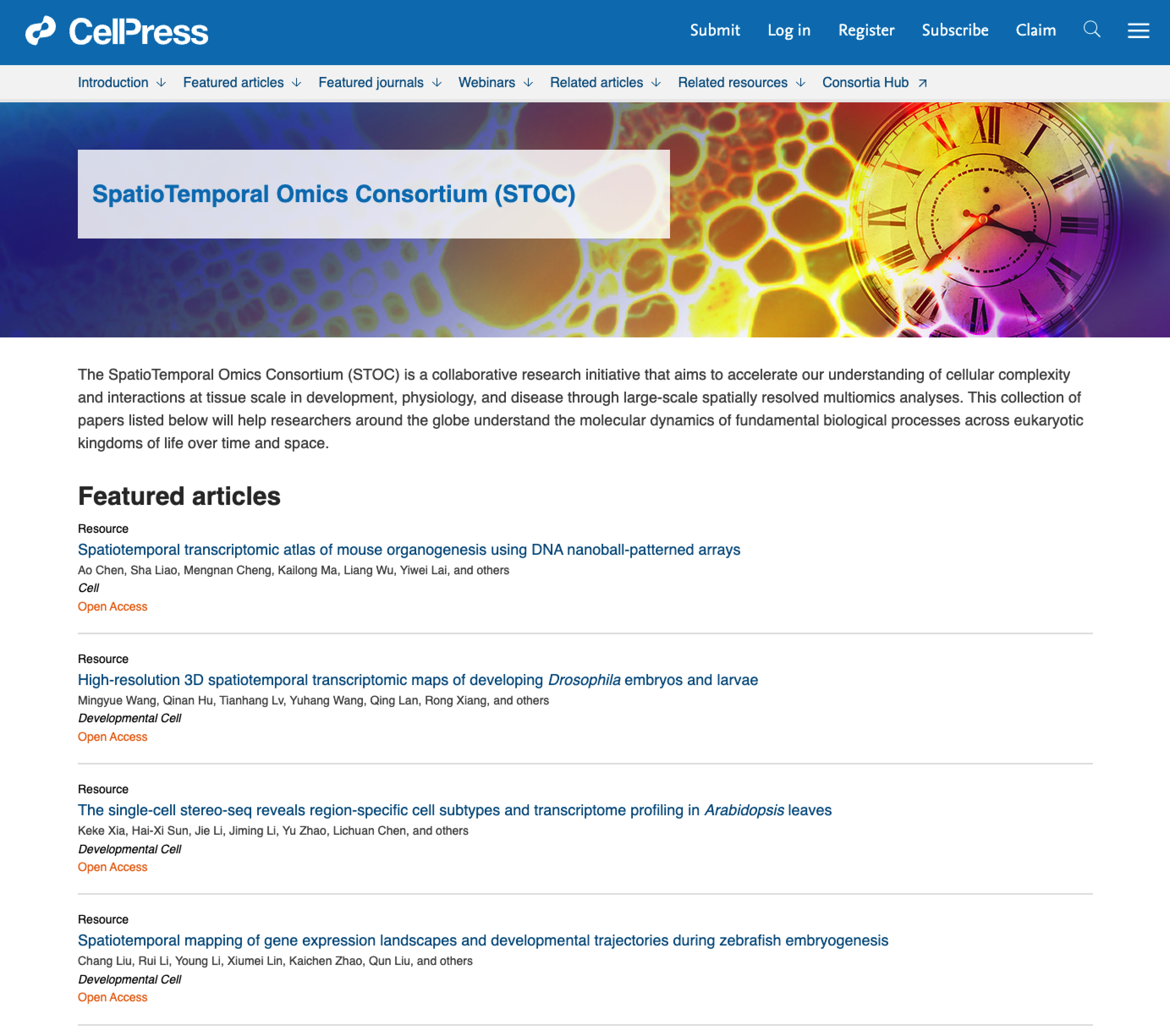 Featured article collection on SpatioTemporal Omics Consortium (STOC) webpage in Cell
Featured article collection on SpatioTemporal Omics Consortium (STOC) webpage in Cell
The paper, Spatiotemporal transcriptomic atlas of mouse organogenesis using DNA nanoball-patterned arrays, is published in Cell. The other three studies on Drosophila, zebrafish and Arabidopsis are published in Developmental Cell. Identifying the characteristics of specific cells within a tissue has significant applications for understanding which cells are causes or indicators of disease, potentially leading to future gains in human disease research.
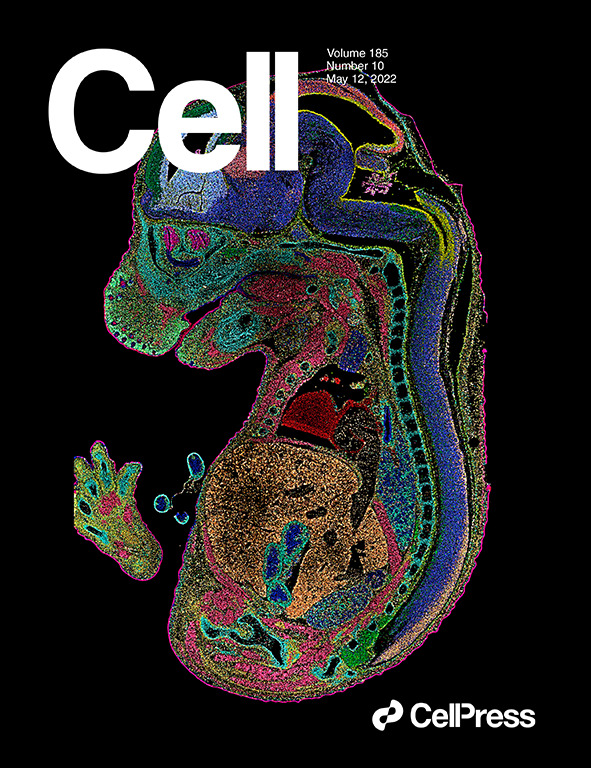
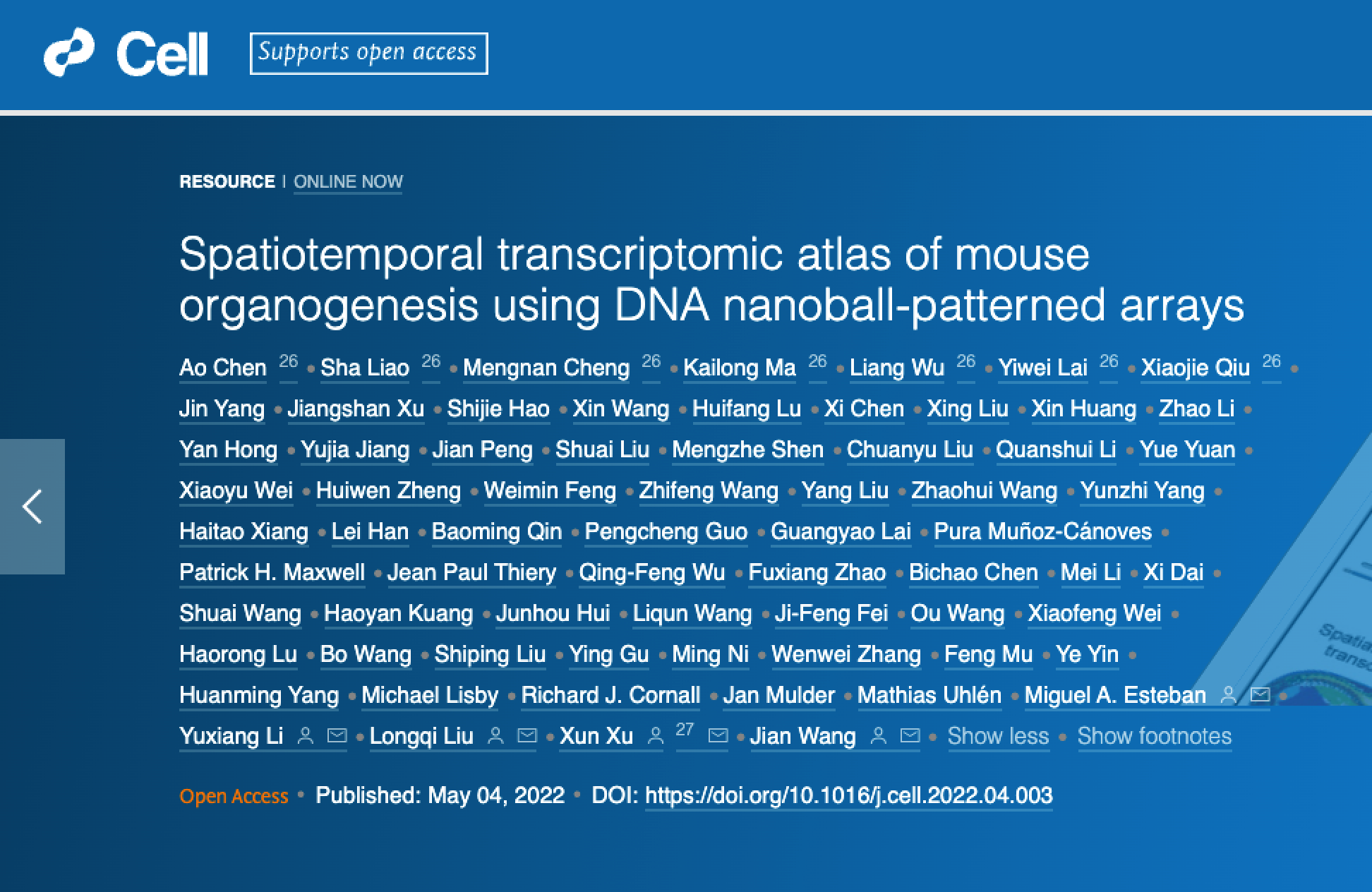 Spatiotemporal transcriptomic atlas of mouse organogenesis using DNA nanoball-patterned arrays published in Cell and selected as cover story
Spatiotemporal transcriptomic atlas of mouse organogenesis using DNA nanoball-patterned arrays published in Cell and selected as cover story
“In the past, it took thousands or even tens of thousands of experiments to complete a spatiotemporal map. Now, with Stereo-seq developed by our scientists, it can be achieved quickly and comprehensively with one. This is a milestone breakthrough in life sciences technogy advancement,” said Dr. Chen Ao, who led the development of the Stereo-seq technology at BGI-Research and is first author of the mouse spatiotemporal atlas paper.
More than 80 scientists from 16 countries, including scientists from Harvard University, Oxford University, Massachusetts Institute of Technology, University of Cambridge, the Karolinska Institutet, the University of Western Australia, the Genome Institute of Singapore, and BGI, have so far collaborated as part of STOC, an open scientific collaboration consortium focused on using spatially resolved, cellular resolution omics technologies to map and understand life.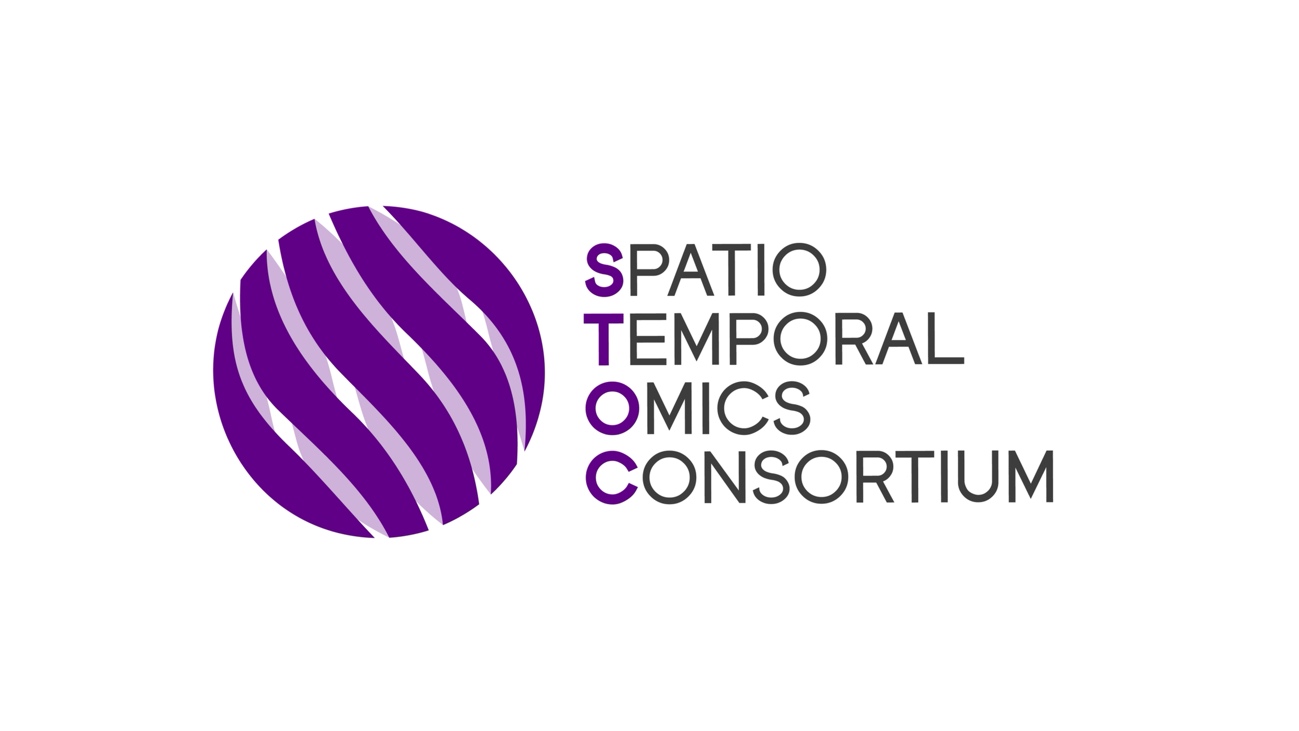 STOC Logo
STOC Logo
Spatial transcriptomics technology is an emerging technology that resolves previous issues identifying characteristics of single cells within a biological tissue. It builds on the achievements of single-cell sequencing, elevating it to the next level by enabling scientists to track a cell’s precise location and how it interacts with its neighbors.
To achieve this, BGI's own sequencing patented DNA nanoball technology, which amplifies small fragments of DNA into larger samples, was combined with its in situ RNA capture technology to create Stereo-seq (SpaTial Enhanced REsolution Omics-sequencing), capable of achieving a subcellular resolution of 500 nanometers (equivalent to 0.0000005 meter) combined with a panoramic centimeter-level field of view.
“The development of single cell analytical approach over the past twenty years has really made a remarkable difference in our ability to understand how cells differ from each other. More recently, it started to be possible to combine that analysis with where cells are in a tissue or organoid tissue section,” said Patrick Maxwell, Regius Professor of Physic and Head of the School of Clinical Medicine at Cambridge, and co-author of the mouse spatiotemporal atlas paper. “In my view, this new paper takes this to a new level by combining a substantial size field of view, making possible to analyze a tissue on a scale of a developing mouse embryo, together with a very high resolution with a very deep transcriptomic read depth.”
“This enables us and the users of this data, which will be freely available, to really start to understand some very fascinating questions about how mammalian development works, and how tissues are organized. That will give us insights into developmental processes, normal tissue function, and also diseases,” he added.
If we compare the study of cells to the study of the ecosystem, previous technologies allowed scientists to understand which animals or plants are on earth. With Stereo-seq, scientists can understand which country, which area, which habitat, which community all animals or plants belong to. At the same time, scientists can also understand what each animal is doing, their past, family history, interaction with other herd, and how they may proliferate and develop.
The scientists used Stereo-seq to examine the early embryonic development of mice, in particular from 9.5 to 16.5 days during which embryonic development is occurring at a fast rate. Stereo-seq generated the Mouse Organogenesis Spatiotemporal Transcriptomic Atlas (MOSTA), which maps with single-cell resolution and high sensitivity the kinetics and directionality of transcriptional variation during mouse organogenesis. 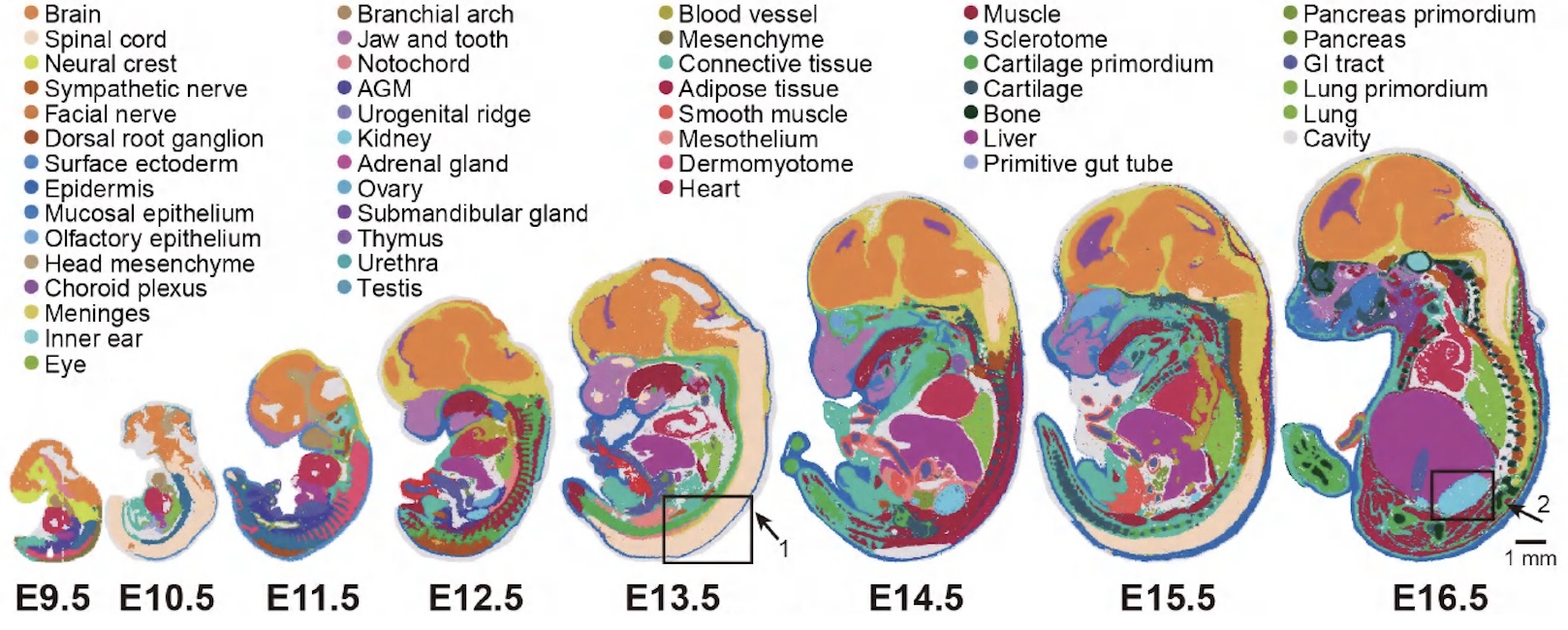 Graphic of early embryonic development of mice from 9.5 to 16.5 days using Stereo-seq technology
Graphic of early embryonic development of mice from 9.5 to 16.5 days using Stereo-seq technology
“Stereo-seq is a transformational breakthrough in spatial transcriptomics technology and is the most powerful technology in this field of life sciences today,” said Dr. Liu Longqi of BGI-Research, one of the corresponding authors of the papers. “We now have a technology to map a panoramic atlas of every cell in an organism, according to their individual biomolecular profiles, in space and over time. We have demonstrated its robustness, and successfully mapped both animal and plant molecular physiology at a scale and resolution never before possible.”
For the first time the scientists were able to produce a series of high-definition maps showing the precise location of the roughly 300,000 cells from the day 16.5 embryo. BGI-Research used this information to produce a panoramic atlas of the mouse and gain insight into the molecular basis of cell variation and differentiation in developing tissues of the brain, including the dorsal midbrain.
“The successful application of our Stereo-seq technology for development has significant implications for the future of genomic research on human diseases,” said co-corresponding author Dr. Xu Xun, director of BGI-Research. “Demonstrating that this technology can pinpoint certain cells which indicate future disease will be critical for diagnostics and therapeutics for a number of conditions.”
For example, Robinow syndrome is a common birth defect. A gene related to this has been found clinically, but how this gene causes defects including cleft lip and palate, and limb shortness, is unknown. The researchers mapped the cleft lip and palate-related gene in the process of mouse embryonic development, and found that the gene was present in the lips and toes of the mouse, and showed high expression. This demonstrated that the gene is very important in the development of lips and toes in mice. If this gene is mutated, the development of lips and toes will be abnormal. This knowledge will potentially help researchers studying Robinow syndrome birth defects in humans.
The BGI-led team carried out similar embryonic research with the zebrafish which has a gestation period of only 24 hours, and also produced a 3D model of the cellular map of the small fruit fly Drosophila. The spatiotemporal transcriptomic atlas of embryonic development in Drosophila, zebrafish, and mouse has opened new doors for the study of embryonic patterning and related molecular mechanisms during embryonic development, providing important data references for further work as well as for a benchmark for unraveling embryonic evolution.
By applying Stereo-seq research on the leaf cells of the Arabidopsis plant, the researchers were able to overcome the long-term difficulty for researchers to conduct spatially resolved single-cell omics studies on leaves and other plant tissues. BGI-Research was able to demonstrate that Stereo-seq technology can be applied in plant scientific research and crop breeding research. Some key applications include understanding key genes involved in seed development, mechanisms behind drought resistance, mechanisms behind heat resistance, and mechanisms behind salt tolerance, for staple crops from rice to wheat to maize. This could contribute to the cultivation of high-quality, stress-resistant crop strains important for many global sustainability initiatives.
The studies obtained all necessary ethical clearance before they were conducted.
Read the papers:
1. Spatiotemporal transcriptomic atlas of mouse organogenesis using DNA nanoball-patterned arrays
https://www.cell.com/cell/fulltext/S0092-8674(22)00399-3#%20
2. Spatiotemporal mapping of gene expression landscapes and developmental trajectories during zebrafish embryogenesis
https://www.cell.com/developmental-cell/fulltext/S1534-5807(22)00249-0
3. The single-cell stereo-seq reveals region-specific cell subtypes and transcriptome profiling in Arabidopsis leaves
https://www.cell.com/developmental-cell/fulltext/S1534-5807(22)00251-9
4. High-resolution 3D spatiotemporal transcriptomic maps of developing Drosophila embryos and larvae
https://www.cell.com/developmental-cell/fulltext/S1534-5807(22)00246-5
SpatioTemporal Omics Consortium (STOC) featured article collection in Cell



